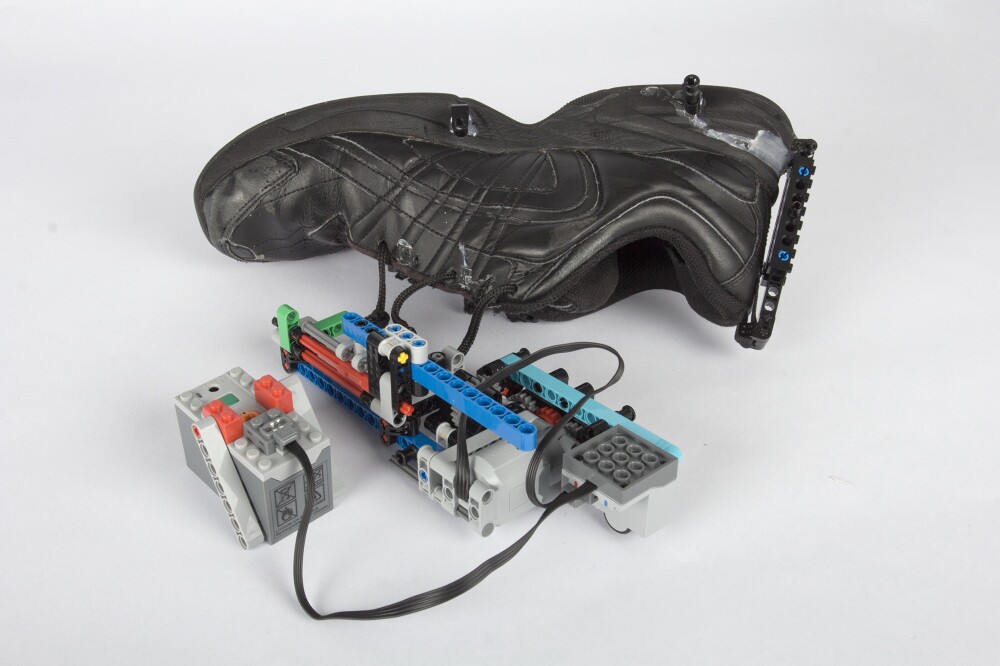From flying cars to hoverboards to pizza hydrators, Back to the Future II promised much for life in 2015. And though we've yet to see most of its tech predictions come true, we have seen a number of self-lacing shoe projects step forward, including Nike's own HyperAdapt sneakers. Industrial designer Vimal Patel's take on Marty McFly's MAGs is a little different, using a Lego contraption attached to the outside of an old shoe to draw the laces tight.
The winding mechanism for Patel's self-lacing shoe is made up of Lego components and Lego Power Functions electronics, the latter including a Li-Pol battery box, an electric motor, an IR receiver and an IR remote. The designer told us that he initially tried to position the winding axle behind the heel, but it didn't work well so he moved it to sit adjacent to the laces.
The shoe itself had four Lego connection points added using a Dremel and a hot glue gun, three permanent and one removable. "The permanent ones (in the sole) were made by drilling holes and fixing a beam with hot glue," Patel explained. "Apart from those four connections, the rest of the construction is unmodified, removable and can be disassembled. The Lego construction is pretty robust, and braced pretty securely in multiple orientations to prevent it falling apart."

Three shoe laces were knotted at one end and fed through each of the holes in the shoe. The other ends were then secured to a rod that's geared up to the unit's motor. The laces self-tighten when Patel switches on the power at the battery box and wirelessly activates the motor via the remote controller so the rod starts to turn.
We like the fact that the winding mechanism is on full view, though all that Lego bulk on the outside would make the shoe awkward to wear. But real world practicality wasn't the point of the project. "This was a quick hack, built over two afternoons, purely for fun, there is no pretension of real-world functionality or usability," revealed Patel. You can see a brief demo of his self-lacing shoe in the video below.
Source: Vimal Patel








